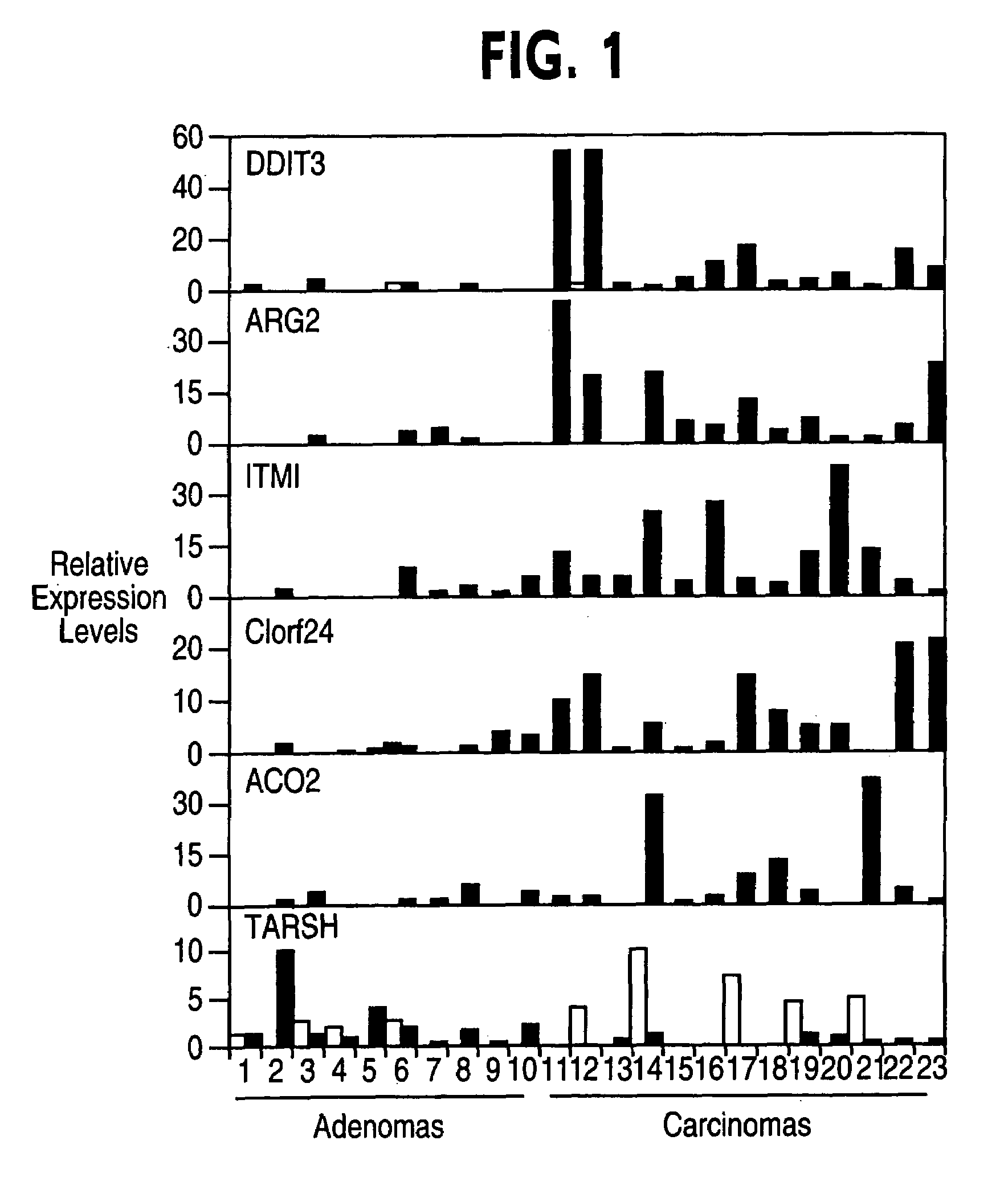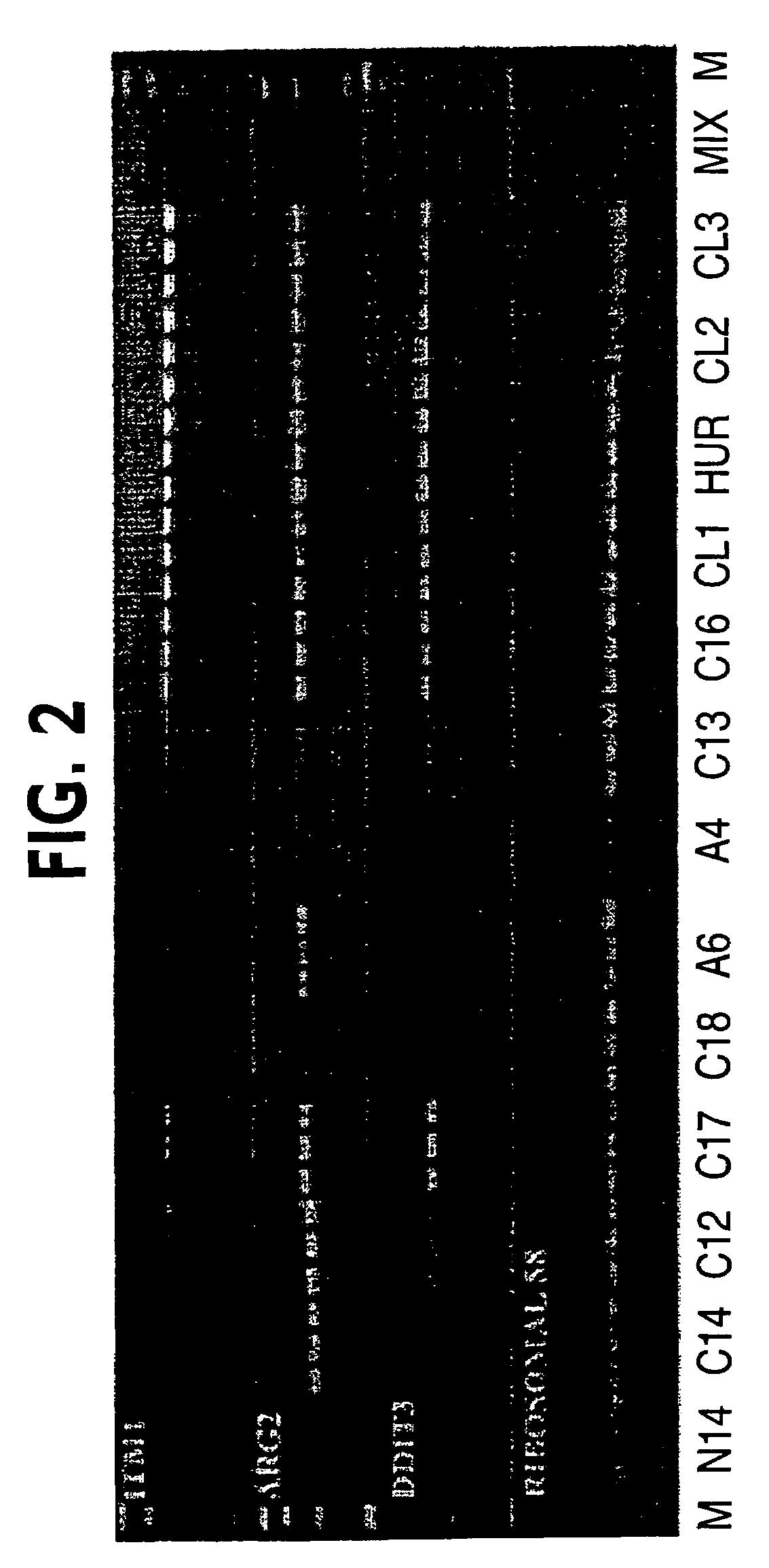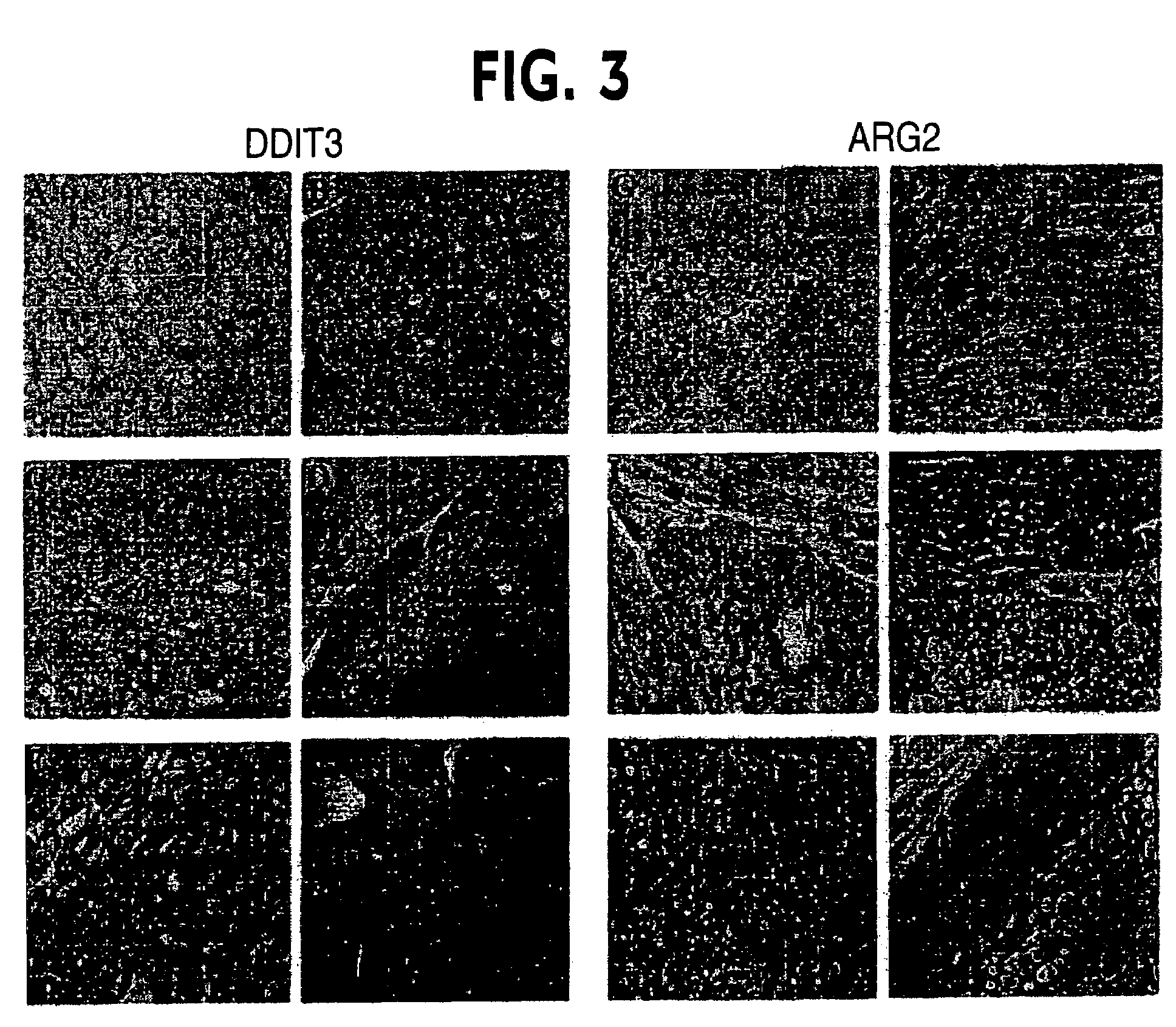Method for distinguishing follicular thyroid adenoma (FTA) from follicular thyroid carcinoma (FTC)
a technology of follicular thyroid and adenoma, applied in the field of distinguishing follicular thyroid adenoma from follicular thyroid carcinoma, can solve the problems of fna clinical problem, ftc clinical problem remains, and candidate markers have not proved to have practical value for fna
- Summary
- Abstract
- Description
- Claims
- Application Information
AI Technical Summary
Benefits of technology
Problems solved by technology
Method used
Image
Examples
example 1
Identification of Diagnostic Markers by SAGE Analysis to Distinguish FTA from FTC
[0027]To directly address the problem of finding diagnostic markers that would distinguish FTA from FTC, gene expression was quantified in FTA tissues, FTC tissues, and normal thyroid tissues using serial analysis of gene expression (SAGE) (17). SAGE counts cDNA transcript tags in large numbers. Thus, SAGE analysis makes it possible to identify a restricted set of genes that are highly expressed in one tissue and not detectable in another. Transcript counts from FTC, FTA, and normal thyroid libraries were generated and compared.
[0028]SAGE Libraries.
[0029]One follicular thyroid adenoma, one follicular thyroid carcinoma, and one normal thyroid were chosen for SAGE (17). SAGE libraries were constructed using a microSAGE procedure (19) and were sequenced through the SAGE portion of the Cancer Genome Anatomic Project (20). Tags were extracted from automated sequence text files; and duplicate ditags, linker s...
example 2
RT-PCR Analysis of Genes Identified by SAGE Analysis to Confirm Expression Level
[0038]To validate the differential gene expression profile predicted by SAGE, seventeen genes with the highest fold-induction were tested and analyzed for gene expression by quantitative real-time RT-PCR.
[0039]Tissue Samples.
[0040]For RT-PCR analysis, twenty-three primary tumors were obtained from patients initially diagnosed with follicular thyroid tumor. The tumors were frozen immediately after surgical biopsy. All samples were obtained from patients followed at Hospital São Paulo, Universidade Federal de São Paulo, and Hospital Helópolis, São Paulo, Brazil. The study was approved by the Ethics and Research Committees of the Universidade Federal de São Paulo and Hospital Heliópolis and was in agreement with the 1975 Helsinki statement, revised in 1983. A signed letter of informed consent was obtained from each patient. All patients received post-surgical radioiodine ablation and suppressive thyroxine t...
example 3
Analysis of Gene Expression by Immunohistochemical Staining
[0053]The expression levels of two genes (DDIT3 and ARG2) were confirmed by immunohistochemistry. For the immunohistochemical study pathologic materials were retrieved from specimens diagnosed with FTC (n=27) and FTA (n=32) at Hospital São Paulo, Federal University of São Paulo in an eight-year period from 1996-2003. Hematoxylin and eosin-stained sections were reviewed by an experienced pathologist.
[0054]Immunohistochemical Analysis.
[0055]Immunohistochemical staining was performed on paraffin-embedded tissue sections (3 μm) placed on 0.1% poly-lysine-coated slides (Sigma), deparaffinized with xylene and rehydrated through a series of graded alcohols. The endogenous alkaline phosphatase activity was blocked by 3% hydrogen peroxide. After pressure-cooking retrieval (10 mmol / L citrate buffer, pH 7.4 for 2 minutes), the sections were blocked in 1× PBS / 0.1% BSA for 1 hour at room temperature and incubated with the first antibody ...
PUM
| Property | Measurement | Unit |
|---|---|---|
| temperature | aaaaa | aaaaa |
| temperature | aaaaa | aaaaa |
| temperature | aaaaa | aaaaa |
Abstract
Description
Claims
Application Information
 Login to View More
Login to View More - R&D
- Intellectual Property
- Life Sciences
- Materials
- Tech Scout
- Unparalleled Data Quality
- Higher Quality Content
- 60% Fewer Hallucinations
Browse by: Latest US Patents, China's latest patents, Technical Efficacy Thesaurus, Application Domain, Technology Topic, Popular Technical Reports.
© 2025 PatSnap. All rights reserved.Legal|Privacy policy|Modern Slavery Act Transparency Statement|Sitemap|About US| Contact US: help@patsnap.com



